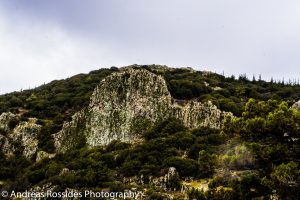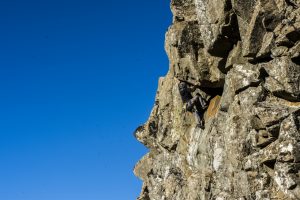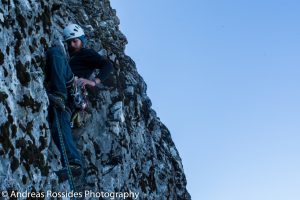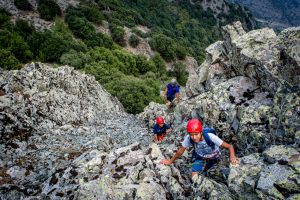The sense of exploring was the driving force that made me start climbing at the first place and it still keeps me going strong. By the time I got deeper into the art of climbing I have always found myself staring up at a cliff or a boulder and think, has anyone tried to climb this? Thus, when I came back to Cyprus after my first year of trad climbing in UK I decided to visit my backyard mountain and the cliffs that I always imagined myself climbing and give them a go.

Since 2012 we clean and climb almost 40 new routes around Madari Mountains from short single pitch climbs to longer multi pitch climbs, mountain and scrambling routes. On a series of articles I am going to cover a selection of routes that we have climbed during the last 4 year of searching for the best dolerite climb in our playground. But first, on this post I am going to give a brief overview of the area and the climbing.
Overview
Madari is a mountainous area of 46 scare kilometers in the center of Cyprus. Its altitude ranges from 1000m at the lowest parts and up to 1613 meters at the highest peak. The majority of the area designated as Nature Reserve and it is part of Troodos Geopark. The impressive rock walls in Madari are dykes of diabase (known as dolerite) and microgabbro that formed due to the erosion of the altered and less durable dykes. The blocky nature of some of the dolerite cliffs is a worrying feature of its construction. Many of the blocks are inherently loose, even the big ones.
Climbing on the dolerite cliffs typically requires creative thinking coupled with precise and confident footwork. Some of the routes that we climbed are on slabs and the sequences do require commitment besides good skills on climbing and navigating through loose rocks. Other climbs are blocky and they weave their way cunningly beneath, between and even sometimes over the overhangs the blocks create. On these routes you need to expect the unexpected; be happy to make blind reaches and now and again pull hard.

Ethics
From the beginning we aimed to climb the routes in a clean style: we only use removable fall protection equipment, while causing minimal damage to the rock. In some cases that means that we on-sight climbed the routes ground up and in other cases we cleaned and tried the lines before.

Climbing is an anarchic pastime and one of its great attractions is the lack of rules and structure. However, because we were in a position to put up new routes we are actively and avidly in contact with the ethical boundaries in our sport. We followed and still do follow a strong set of ethics in order to cause as less damage as possible and meanwhile maintain the unique style of climbing in the area.
- From the begging we felt that it was unethical and unnecessary to place fixed protection (pegs, bolts or in-situ cords) on the rocks. “No bolts are allowed to be placed on routes that can be done clean by climbers using traditional climbing style” (UIAA, 2012).
- We aimed to climb the most obvious and clean lines in order to avoid damaging the rock by extended cleaning of moss and loose rocks. On some of the routes we left the easier parts completely untouched (that makes things more interesting because you have to dig through moss and dirt in order to find a handhold or a gear placement).
- We always climb with the Leave no Trace code in mind, no fires, leave no litter, park sensibly, avoid disturbing wild animals and leave your dog at home.
- For many species of birds the crags are their ‘home’. Madari cliffs have mainly Rock Pigeons nests; please do not climb during nesting time. Rock Pigeons peak reproduction occurs in the spring and fall. Climbers have to use their own judgment in assessing whether their activity is causing a disturbance.
- Trees provide quick and convenient belays but often cling to their rocky perches tenuously – treat them with love and respect or they won’t be there for much longer.
- The approach to most of the crags is through existing trails in order to avoid further damage.
- We tried to use existing topography names for some of the crags; however, in some cliffs names do not exist so we named the crags in a way that is easy to identify them.



Leave a Reply